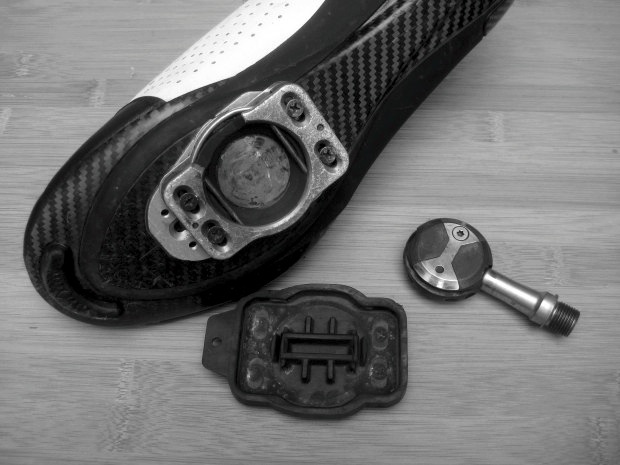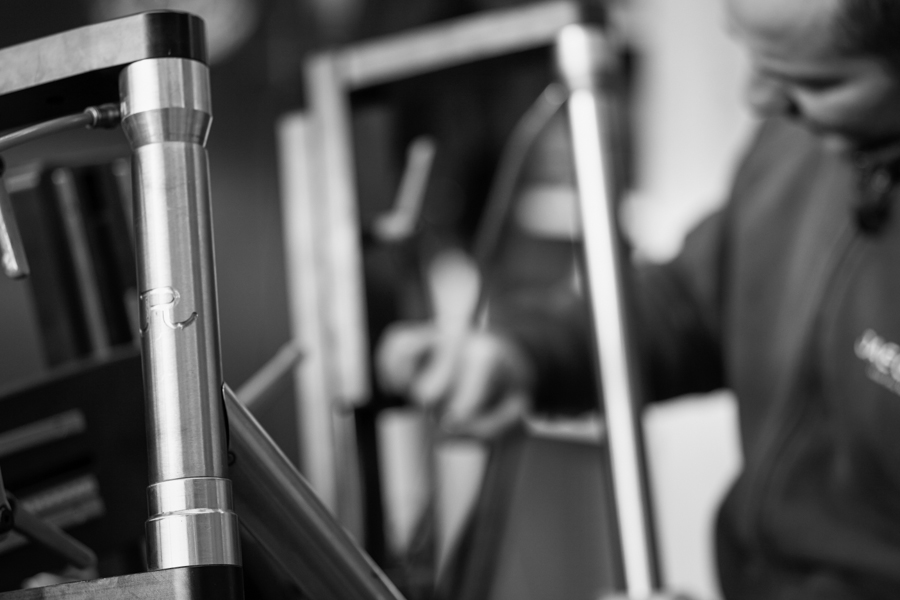Reverence: Speedplay Pedals

I’m old as dirt. My first two race bikes employed toe clips and toe straps and that set-up was bad. For many reasons it was bad and any retro-hipster who thinks otherwise is wrong. When Lemond and Hinault started racing on the white Look clipless pedals, everyone but Sean Kelly quickly switched. Talk about a quantum improvement, it was long overdue change. Look made improvements to their models, like the notion of float, and other manufactures jumped in. The new paradigm was a cleat on the pedal, like the original quill pedal system but with a spring loaded snap-in, twist-out pedal. Everyone was happy.
Everyone is happy until you have to replace a worn out plastic cleat. Did I walk a lot in my cycling shoes? Did all liquor stores have rough cement floors with giant moving sanding belts in front of the cash registers? I don’t remember that but I do remember replacing cleats too often and the duplication of cleat position was tedious. I could live with that, practice makes perfect but it was the creaking that drove me to madness. No amount of wax could stop the occasional creaking the cleat and pedals would make while climbing. Rule #65 was being violated before it was a Rule.
Wiser friends had already switched to Speedplay pedals. I was a little wary; they looked weird. One day into using them I understood: total frictionless float, two-sided entry, mindless pedal release. There is no cleat alignment issue as the pedal has no fixed position in the cleat. I was overcome with regret. Why had I waited so long? Why did I stick with creaking Look French pedals? Life is too short for such rubbish and I wasted too much of my cycling life with them. I’ve been using the X-series stainless steel pedals and the original pair was happily going on eighteen-plus years until I replaced the pedal needle bearings and bodies…I don’t want to talk about it. If you employ the good aftermarket cleat covers, and use a little white lightning teflon on the cleat spring bales, the cleats can last a few years. The pedal bodies have grease injector ports. Inject, wipe clean and that is the maintenance routine, easy and fun.
I’ve never used another model of Speedplay so I can’t speak to the advantage of limited float. When riding my right foot does a weird swing out toward the bottom of each stroke. To my mind that is a good thing, the float allows my leg to do that, without that maybe some extra knee wear would occur.
Frank and I have discussed the great pedal switch and his major obstacle to switching pedals is having to switch the whole n+1 stable over and that is not cheap. For Frank and VHM that stable may be five bikes. That’s a lot of pedals. Inertia. Commitment. It’s a big problem. Or one takes Marko’s approach: different shoes for each bike.
I have brand loyalties but if another cycling product is superior in form and function I hope I will see that and move on. Campagnolo gruppos and Chris King headsets are two brands on my bikes that I don’t see moving away from but I would ditch either of those before I would stop using Speedplay pedals. I’m that convinced.
This film is from Peloton’s website. It’s an interesting look at some American cycling manufacturing including Speedplay.
[vimeo]http://vimeo.com/43771401[/vimeo]

